Maha Nandi Temple also known as Mahanandiswara Temple located in the east of Nallamala Hills near Nandyal town in Kurnool district of Andhra Pradesh. The Mahanandiswary Swamy Temple is positioned right at the foot of the hills of Srisailam forest.
The ancient Rishis selected the Kshetras or Theerthas which are the divine places for meditation (tapas). Kshethra and Theertha are having separate meanings in their value. Kshethra is sacred with the statue or Murthy (Deva or Devatha) and the Theertha is sacred with water (Theertha) which flows through that place. But this place Mahanandi is sacred and powerful both with the Murthy and the Theertha (Water).
The supervising deity here is Lord Shiva who is worshiped by the name of Mahanandiswara Swamy which is in the form of a sanctified Shivalingam. The famous water source is also believed to have been evolved from beneath the self – manifested Shivalingam which is present in the sanctum sanctorum.
The incredible trait of the temple is that the sanctified water gushing out of the sanctum sanctum assists in irrigating 2000 acres of fertile land around the village.
According to Mahanandi Temple history , the 7th-century temple is devoted to Lord Shiva. Mahanandiswara is one of the ancient temples of India and it dates back over 1,500 years and the inscriptions of the 10th-century tablets portray the fact that this temple has been restored and rebuilt quite a lot of times. The initial structure of the temple was erected by the Chalukyas in the 7th century and, later on, numerous additions were made to the temple in the 10th and 15th centuries.
A copper plate by Krishna Devaraya confirms that Mahanandi belongs to one of the most blessed places where Simha, the king’s brother donated precious gifts.
The kings of the area who were addressed as Nandas ruled in the 10th century AD and constructed a mammoth of temples and adored their ancestral deity, Nandishwara.
According to the legend of the temple,in the beginning of Kritayuga, once there lived a Rishi in the Nallamala forest named Silada. He built a small cottage and lived in it with his wife. He was always interested in Dhyana or Tapas. He was eating Silas (stones) as his usual food. So, he was named ‘Silada’. He had no children. So, his wife requested him for children. He wanted to fulfil her request and so meditated on Sarveswara for a long time.
After some years, Lord Shiva appeared before him and asked him what boon he wanted. Silada forgetting his wife’s desire. Requested Parama Siva to allow him to serve him forever. But the Omniscient Lord knew that he had forgotten his wife’s desire. Lord Siva told him that he would fulfil the desires of both wife and husband. He blessed the Rishi and disappeared.
Immediately a male child appeared in the hole or cave. Both of them felt extremely happy. They named him ‘Mahananda’. Day by day the child was growing up and received a good education spiritual education from Gurus. After upanayana, Mahananda asked his parents to allow him to do Tapas about Siva. They felt very happy and blessed him.
In a short time Parameswara appeared before him. The boy did Pranams to Siva in joy and praised him in many hymns. Parameswara was pleased and ready to give him boon. The boy requested Lord to allow him to be his Vahana (Vehicle). Parameswara agreed to it and fulfilled his desire.
Lord Siva told him. “My dear son! This place will soon be changed into a powerful and holy river which flows forever. This holy place will become a sacred and famous Kshethra on your name (MahanandiKshethra). it is true.” Saying those words Parameswara transformed him as his Vahana (bull) and went to Kailasagiri.
After Many years, a Nanda King the son of Uttungabhoja of Pandava Race ruled this place residing at Nandyal town. There was a village named Gopavaram (then named Gopitavaram). A Shepherd had a herd of cows. The cows used to graze in the forest every day.
One of the cows in the cattle used to enter a bush and ooze (discharge slowly) the milk from her udder on the grass and return home with its empty udder every day. The shepherd wanted to know the reason and followed the cow carefully on the next day. The cow entered the bush as usual. The shepherds were observing its movements hiding behind the bush. The cow stood on the grass which covered the hole (ant hill). A child came out of the hole and drank the milk of the cow. The cow returned and came home with cattle.
The shepherds were talking about the event here and there. The spies heard the matter and told the same to the king. The king felt very happy and decided to see this in person. The next day he went to the forest and followed the cattle of the cows observing the movements with special attention. The cow entered the bush, stood on the hole and oozed (discharged-slowly) the milk from her udder. The king wanted to see the same clearly and walked towards the cow slowly. The cow was frightened and ran away. Its hoof was sunk in the hole while running in a hurry. The child was vanished. The king went home with a great surprise.
In the night he felt a dream, Parameswara appeared before him and told him in the dream, “I myself drank the milk from the hole. Construct a temple there, I would stay in the places called Navanandis (Navanandulu) within a circle of 80 Kms. Ganga Devi also would serve me with her brightness. Your glory will be eternal.”
On the next day the king went to the ant hill. It was turned into Rock Linga. He was very surprised and saw the Siva Linga deeply. It was clear that the hoof of the cow was sunk in the hole. The same can be seen even now.
The king constructed a temple there and dug a pond in its opposite direction. Within a short time, it became the endless flow with clear water. He named it Rudra Gunda.
He also dug two ponds in both northern and eastern sides and named the ponds Brahma Gunda and Vishnu Gunda.
This is one of the most momentous features of the Mahananadi temple, the pure holy water of Pushkarani which flows throughout the year. The water is so gemstone clear that even a particle dropped in the water looks visible, which is key factor of magnetism for all the visitors.Vishwakarma Brahmins designed the tanks such a way that water level remains at 5 ft.
The water is considered to come from five springs which are named ‘Srisailadhara,’ ‘Narasimhadhara,’ ‘Daivodhinidhara,’ ‘Nanditirtha’ and ‘Kailasatirtha’ respectively.
This water possesses healing properties. The water during the winter season will be very hot and vice versa during the summer. Water at Temple tanks will be warm at early hours of the days and water gets cooler as the day progress. Irrespective of the seasons, water here flows at a constant pace. Temple inscriptions state that this flow never stopped right from 6th Century.
Next to the central sanctum is a shrine devoted to the Goddess Kameshwari Devi, the companion of Mahanadeeshwara. The Srichkara in front of the deity is said to have been established by Adisankaracharya.
One of the world’s biggest man-made Nandi of 15 ft. x 27 ft is present near the Mahanandi temple.
Nine Nandi temples present in this Nallmala Hill Region are as follows. Mahanandi, Prathama Nandi, Naga Nandi, Soma Nandi, Surya Nandi, Krishna Nandi or Vishnu Nandi, Vinayaka Nandi, Shiva Nandi, Garuda Nandi. All these Nine Nandi’s are famous, but Mahanandi receives the highest fame among all of them.
The unique thing about this temple is, one can touch the water near the Shiva Linga. The devotees can offer prayers and touch the Shiva Linga. This is unusual, because traditionally at temples, the main deity is kept away from the touch of the devotees.
Recently added two big mandapas in front of the temple provides nice shade to the devotees.
Temple board developed a garden around the temple which houses several colorful statues of Hindu gods primarily associated with Lord Shiva.
Within the same complex of the temple, one can see an arched marble shrine of ‘Lord Kodanda Rama,’ the seventh incarnation of Lord Vishnu that was supplemented with the compound in 1953. Images of Sri Rama, Sita and Lashkmana are strikingly carved and the devotees find it complicated to progress away from them. There is a separate shrine for Hanuman in same complex.
A giant granite Nandi has been installed in front of the temple which is costed 35 lacks and weighs 50 tons approximately.
There are even 5 separate shivalingas which are installed by Pandavas themselves while they were in exile period.
MahaShivrathri is one of the most popular events where numerous devotees gather to pay homage and worship Lord Shiva. The festival is celebrated for seven long days initiating from ‘Maha Bhula Chaturdasi’ which is the 14th day after full moon in February- March.
Grand Ratha yatra celebrated in this temple attracts large number of devotees from several states.

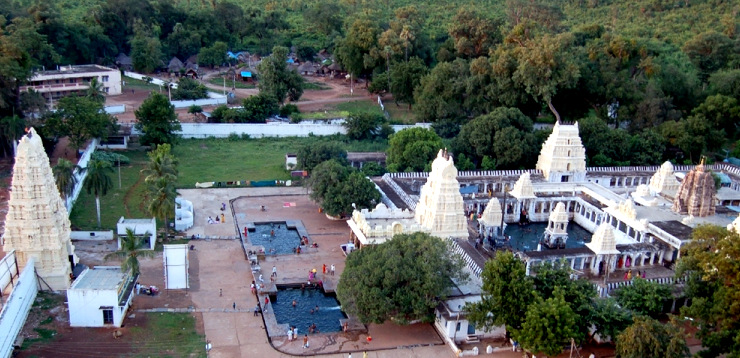
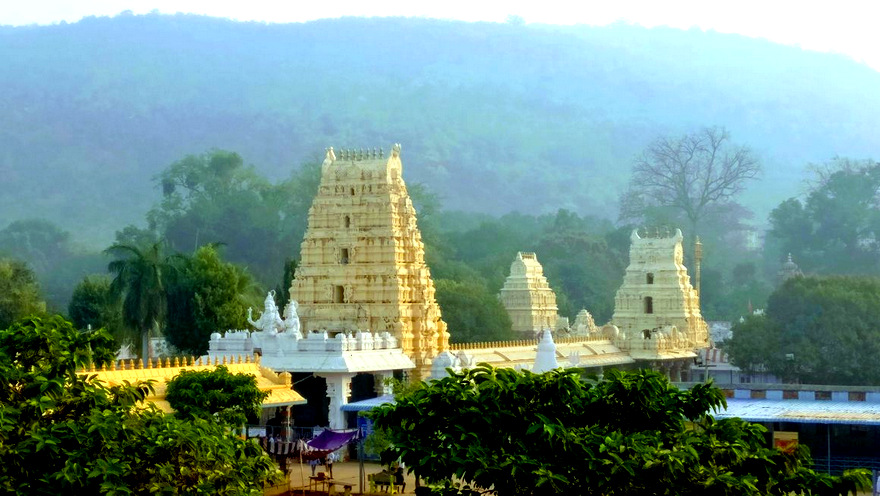
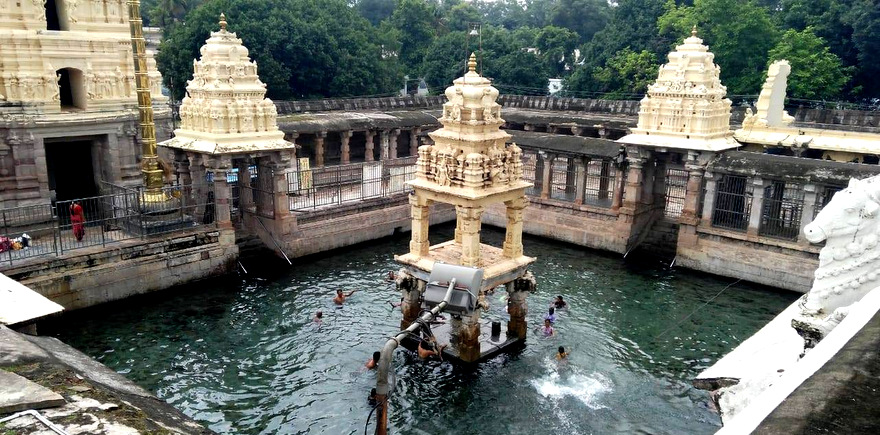

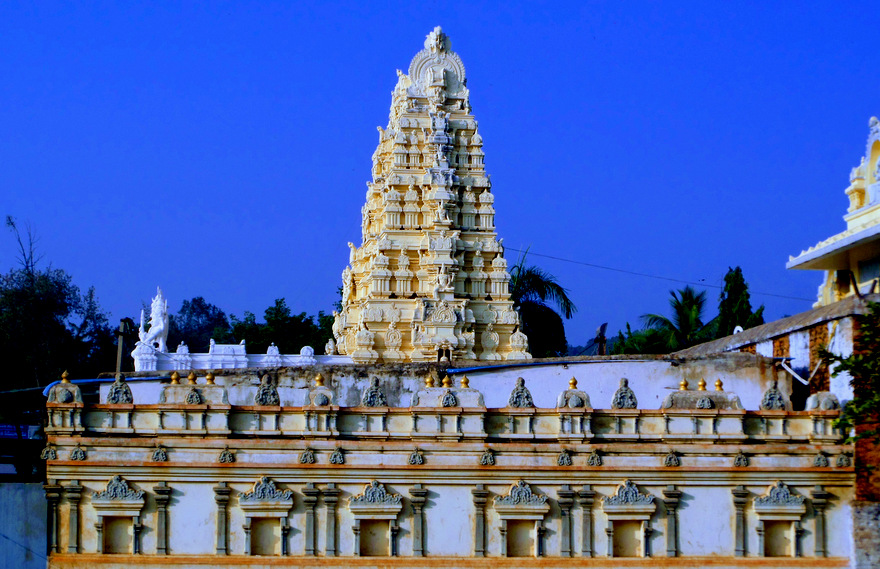











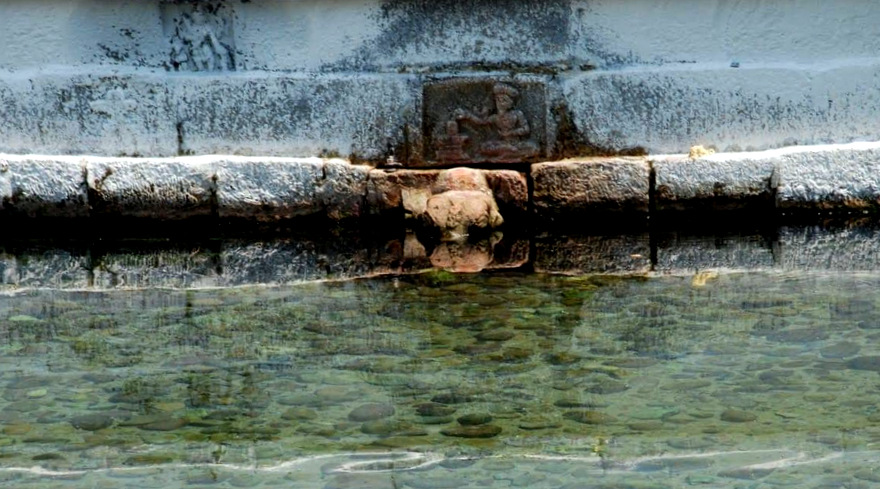


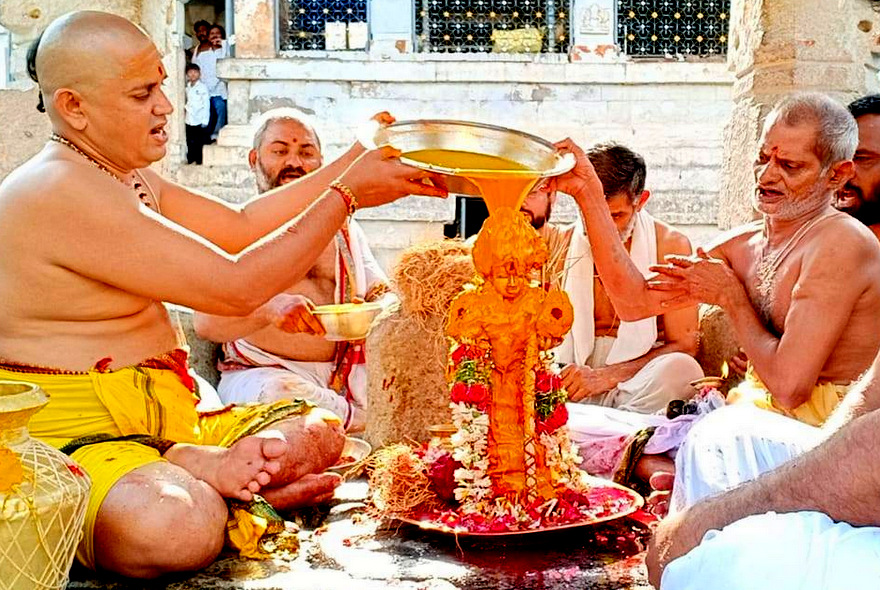






















Excellent Presentation. The narrative is sequential and clear. One suggestion is to give postal & Email ID by which the temple management could be contacted.
NICE ARTICLE ABOUT, AS FOR ME AN UNKNOWN SHIVA TEMPLE. WISH I COULD THERE ONE DAY….. 🙂
Adbhut… Namo namaha atulya bharat
I request you explain the philosophy behind SHIVALINGA .Why this shape ? Its significance .
Nice article . Feel holy after reading it.shiva bless us all
GREAT. IT APPEARS NO ONE IN TAMIL NADU HAD PRAYED TO LORD SHIVA, WHICH IS WHY THE STATE IS PERENNIALLY WATER STARVED.
Nice article, will love to visit the place one day.
Well written and explained th full history.
Can anybody suggest how to go there
Good article, tok me back to 45 years, when I last visited this most Divine place.
Thanks and regards
An excellent article of our great heritzgeR
very interesting…should plan a trip and visit the shrine….
It will add better shine to the article, if the facilities available at the vicinity of the temple like accommodation for stay, food etc preferably with rates. This will be a great info to devotees intending to visit. Also, adding further the correct route from major metros & modes of transport details will still be better.
Incredible history and very good presentation. Yes, exactly where is temple located, and please also give some information for contact as K. Shrinavasan requested.
BEAUTIFUULY PRESENETED.IF YOU CAN ADD HOW TO REACH THE PLACE,THAT WOULD BE MORE HELPFUL.
where are the shiva lingas installed by pandavas ?
Wonderful narrative. Felt as if I was there having Dharsan of Lord Siva and NAVA NANDHIS after a bath I nthe holy water
Had been there. Truly a Divine Place!
Very inspiring. The pictures are very impressive. The narration is picturesque.
Om Namah Shivaya
Excellent presentation. Unknown to me till now. Wish , one day i will have blessings
Sincere thanks for the excellent service by India divine
Thank you for sharing and this is my favorite place
Lovely temple.I am from Srilanka wish to spend few months there . But how?
srideva
Well written and good presentation with relevant photographs.
Who knows about HIS Leela
OM NAMASIVAYA
LAST WEEK I VISITED THIS TEMPLE WITHOUT KNOWING ALL THE ABOVE DETAILS. IT WAS REALLY A FANTASTIC TEMPLE.
THE ARTICLE GIVES VERY NICE DESCRIPTION ABOUT WHAT ALL I HAVE SEEN DURING THE VISIT.
good Article
Lovely article , feel like I have visited the temple based on the description. 🙏